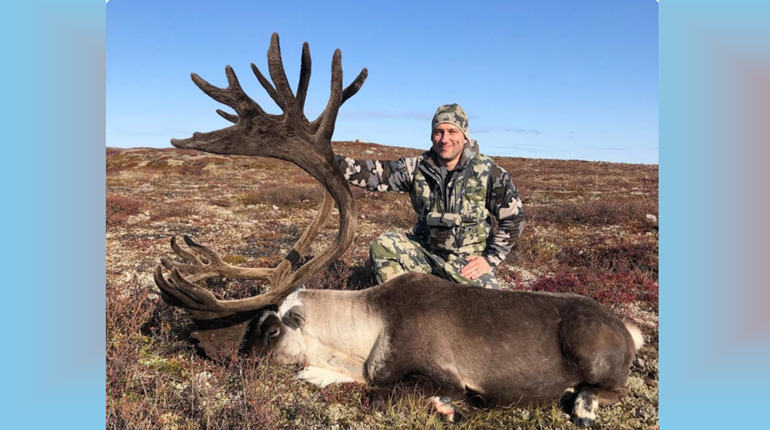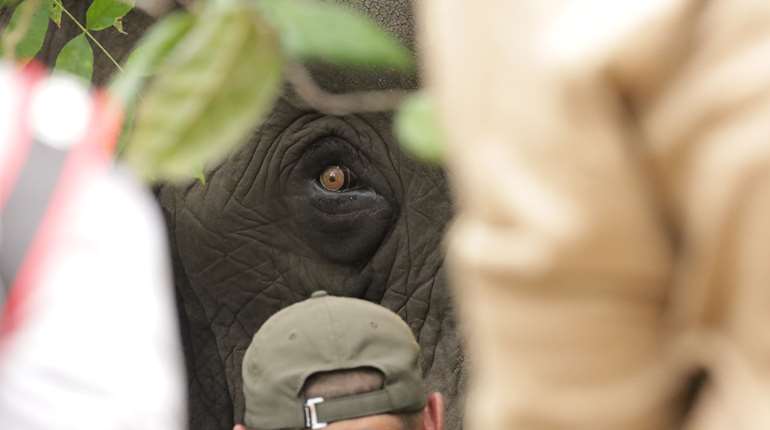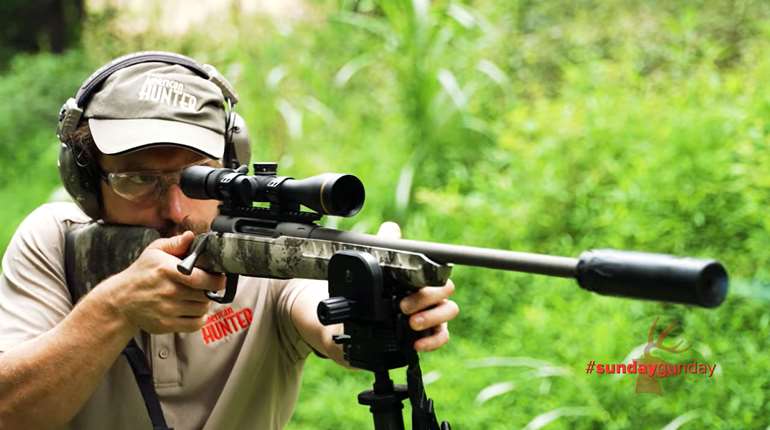
Ask any wildlife biologist in your state’s land-management division what his job is and the proud answer is likely the same: “We manage XX thousands of acres on XX wildlife management areas.” It is true that our state wildlife biologists and foresters are charged with managing our WMAs and other public lands. However, based on what I’ve learned, not many Eastern states’ land-management teams cut, mow or otherwise manipulate more than about 1 percent of those acres annually.
The majority of state WMA acreage in the East has matured into climax (i.e., wildlife-empty) forestland in a slow process of unchecked growth that began when most of those lands were first acquired during the 1930s and 1940s. In fact, as of 2012 some 80 percent of those acres have not been touched by a chain saw or bush hog in more than 70 years.
What is happening to our WMAs?
The Massachusetts Division of Fisheries and Wildlife admits on its website that in the 1940s the state’s WMAs consisted of 80 percent early-successional habitat and 20 percent mature forest, but now those numbers have been reversed, which explains the corresponding reductions in grouse, woodcock, cottontail and deer populations in those areas.
“Today, 92 percent of MassWildlife’s 90,000 WMA acres is forested,” said William Minior, MassWildife’s chief of Wildlife Lands. “It is estimated that 80 percent of the forest is in saw timber. A maturing forested landscape, coupled with the residential and commercial development of much of the remaining abandoned agricultural land, are [sic] taking a toll on early-successional species.”
Minior noted that a distribution of 10 percent seedling forest, 30 percent sapling/pole and 60 percent saw timber is desired to maintain populations of all native wildlife species. This means there must be at least a 30 percent reduction in the existing forested acres or there will be continued losses in critical early-successional habitat.
Maine is a perfect example of how it costs millions of dollars to manage a few hundred acres of habitat. In 2010 the Maine Department of Inland Fisheries and Wildlife received $4.5 million in Pittman-Robertson Federal Aid in Wildlife Restoration funding (a tax on guns and ammo, bows and arrows that is distributed to states based on hunting license sales). That money, along with 25 percent in state matching funds, is to be used “for wildlife habitat purposes” according to John Organ, chief of the U.S. Fish and Wildlife Service’s Wildlife and Sport Fish Restoration programs, which oversees P-R fund distribution and projects in each state. But this is where the system breakdown begins. Since 1939 (when Pittman-Robertson funding was first disbursed to the states), Maine has received more than $60 million in P-R funding in addition to various other grants. Where is all that money going if not into its intended purpose of wildlife-habitat manipulation on hunter-funded WMAs?
“Salaries and operating costs,” said John Boland, a regional biologist with the Maine Department of Inland Fisheries and Wildlife, who admitted that even after more than 70 years of P-R funded operations “only about 20 percent of our WMAs are in younger age classes,” the early-successional growth that is most useful and important to the majority of wildlife species.“In recent years there has been broad acknowledgement that the decline in early-successional forest has had negative consequences for a wide variety of species running the gamut from traditional game species to songbirds,” the USFWS’ John Organ said. “Timber harvesting on public lands does present challenges in states where most of the people live in urban areas and do not appreciate or understand the need for active management,” he said.
Unfortunately, in Maine and other states, funding generated by hunters to purchase and manage state WMAs is poured into salaries for career “research” biologists who, in some cases, spend decades on inconclusive studies resulting in mountains of paperwork, grant applications, program reviews and annual reports but no practical benefit for sportsmen. Also, habitat money is being spent on road construction and maintenance, bridge and culvert installation, building construction and maintenance, boundary marking, trail maintenance, docks, floats—even garbage pickup—and many other non-habitat projects.
According to Maine’s annual report (required by the USFWS of any state that receives P-R dollars), clear-cutting, mowing and other hands-on habitat enhancement work is conducted on fewer than 2,000 acres of the total WMA holdings in the state. Even more disturbing is that while Maine’s WMAs are paid for and maintained only with hunter-generated dollars they are open to a wide spectrum of recreational users including hikers, bikers, horseback riders, snowmobilers, cross-country skiers, ATV operators, boaters, bird watchers, fishermen, cemetery visitors and anyone else who chooses to visit these areas—free of charge. Only hunters pay for the purchase and upkeep of these lands, and yet their interests continue to be the least served.
This happens elsewhere, too. For years, Georgia charged hunters a $20 WMA stamp fee to access their own lands while allowing all other uses free access. In 2012, Georgia finally levied a “user fee” for non-hunters, and other states are following suit.
To be clear, the money that is released by the federal government for habitat projects is supposed to benefit birds and animals. If state hunting-license money is used to match those funds, the project must benefit hunted species, not non-game animals, reptiles or insects. Some states don’t use P-R funding because of the paperwork requirements and the difficulty they have in raising their 25 percent match. But every state land manager I talked to said WMAs are purchased with P-R funds plus state funds that come from hunting license money.
Why are so many of our WMA acres sitting idle after 75 years of P-R funding?
Sportsmen do not need and do not benefit from many of the “improvements” and “studies” funded with P-R dollars, yet their money is being used to support these and other projects that, in many cases, benefit only the state employees who requisition them, enabling them to continue to conduct more studies and more surveys, all using P-R funds.
Adding to WMA habitat woes is that as more states make budget cuts they limit the number of dollars available to match P-R grants.
“For each dollar the legislature cuts from our budget we are actually cut $4,” said Delaware biologist Wayne Lehman. “Plus, our license funding is decreasing each year because of a reduction in hunting license sales, which is how P-R figures its funding for us. So, while there might be a lot of P-R funds available we cannot access it because we have no money to match it.”Most ground-level wildlife managers are doing their best to improve and enhance wildlife habitat on our WMAs using Pittman-Robertson Act funding when the money finally trickles down to them, but the system is flawed.
In his 2010 annual report, Ryan Robicheau, a Lands Management Division biologist in Maine’s Region B, complained, “Funds from the forest harvesting operation on P-R lands are being spent as soon as they accumulate for any eligible expense. In turn the regional staff has been unable to access money for special projects on the WMAs. In addition, the regional staff is not receiving any budgetary information that would enable them to track available amounts each year. A mechanism needs to be implemented that ensures major expenditures needed for the sound management of wildlife-management areas are provided for during the year.”
Some habitat programs on WMAs, designated as “wildlife habitat improvement” projects, actually provide habitat for species that are illegal to hunt.
A recent 65-acre clear-cut on a 5,000-acre Maine WMA was, according to the local forester, designed to create and improve habitat for moths and butterflies, neither of which may be hunted. Certainly a wide variety of species will benefit from any habitat-manipulation program, but P-R requires that the focus of projects conducted on hunter-funded wildlife-management areas be focused primarily on game birds and mammals, projects that would also benefit a wide variety of non-game species, instead of the other way around. In New Hampshire, a recent report by the Fish and Game Department boasted of a new clear-cutting project on a WMA that was presented to the public as benefitting “70 different wildlife species” including, insects, reptiles, songbirds, raptors and other species, 90 percent of which cannot legally be hunted.
The USFWS’ Organ explained the low level of active management being conducted on our WMAs by pointing out that the Pittman-Robertson Act allows not only for the purchase and development of those lands but also for “other uses” such as research projects directed at finding solutions for the problems affecting wildlife restoration. Despite this, a common refrain among state land managers (those who are charged with the planning and implementation of work under Pittman-Robertson Act guidelines) is that there is not enough manpower or money to accomplish their goals.
Even in Pennsylvania, which has one of the best land-management divisions in the United States, actual habitat manipulation comes to 15,000 acres per year. That sounds like a lot except that the Keystone State has more than 1.5 million acres in state game land holdings, which means that 99 percent of those public hunting lands stand idle each year. In addition, Lisa Williams, a Pennsylvania Game Commission wildlife biologist, said the state has lost some 1.7 million acres of early-successional habitat in the last 30 years.
“Long-term declines in grouse and woodcock [numbers] are linked to declining areas of early-successional forest,” Williams asserted.
The situation is the same in New York, Georgia, Connecticut and even Ohio, where Jennifer Windus, a 28-year land management biologist there, admitted that she shares hunters’ frustration with the lack of habitat programs on state WMAs.
“We continue to buy land but we are not willing to allocate the necessary funding to manage the land,” she said, noting that her department “no longer even tries” to manage its WMAs for maximum habitat diversity, primarily due to complicated funding and manpower issues.
“All land managers are now forced to prioritize and do less as we just do not have the resources anymore,” Windus added.
Contributing to the habitat deficit is that most years more land is added to the WMA system than is enhanced or improved for early-successional habitat: the saplings, brush, grass and succulents that constitute prime habitat for the greatest diversity of wildlife.
Most Eastern WMAs presently consist of about 80 percent mature forest with 20 percent or less in mowed areas, clear-cuts and sapling growth. When the Pittman-Robertson Act was passed in 1937, the top biologists of the era (including Aldo Leopold, the “grandfather” of modern conservation) said that for maximum diversity of habitat and wildlife species there should be a mix of 30 percent mixed saplings, 10 percent slash, 20 percent brushy saplings, 10 percent open meadows and 30 percent mature forest. I don’t know of any state in the East (including Maine) with even one WMA that is at or near this Holy Grail of management goals after 75 years of Pittman-Robertson Act funding.
There are many reasons why our hunter-funded WMAs look like mini state forests. In nearly every state that uses P-R funding, most of the land-management resources have been focused on those “other uses” ranging from maintaining miles of boundary lines, roads, trails and bridges, plus developing plans, consulting, site evaluations and other administrative duties.
For example, John Pratte, Maine’s Wildlife Management Section supervisor, reported that a total of 1,777 acres of habitat management was conducted in 2010, including managing timber on 1,050 acres, herbaceous seeding on 14 acres, clearing of 27 acres for early-successional habitat, “vegetation control” (i.e., mowing) on 669 acres, planting on 6 acres, apple tree releases on 5 acres and managing for wild turkeys on 6 acres. Aside from annual mowing, which some biologists now believe is actually detrimental to wildlife populations, the total acreage “managed” that year was less than 1 percent of the state’s WMA holdings, at a cost of more than $5 million.
Our WMAs were originally established to provide for continued public use including hunting, fishing and trapping but now include hiking and walking, biking, cross-country skiing, berry picking, leaf peeping, horseback riding, snowmobiling and ATV riding, boating and canoeing, cemetery visiting, training hunting dogs and wildlife watching. However, of all these users, only hunters are paying the freight.
Meanwhile, as our WMAs have grown to mature forest hunters complain that deer and other game species are more abundant on bordering private properties that in many cases have more habitat diversity than the neighboring WMA. Because of this, there has been a shift in hunter interest from state-owned WMAs to private lands, leases, clubs and pay-to-hunt operations because the habitat on those areas is often better managed for game.
One common concern among state wildlife biologists is that there are more administrative requirements today than ever before.
“There is a larger issue that gets at the heart of the problem,” the USFWS’ Organ said. “State fish and wildlife agency personnel at all levels are frustrated because of the demands placed on them and the insufficient resources they have to address them. What is needed are systemic changes—changes in governance, cultures, etc.—that can lead to broader funding and maybe allowing P-R to be more focused.”
The “culture” issue noted by Organ refers to non-paying users ignorantly interfering with sound habitat-management principles and practices, yet their demands often are considered by state land-management administrators.
“I conducted an 80-acre selective cut (as recommended by a state forester) and the ‘greenies’ came out of the woodwork,” said Wayne Lehman, a career wildlife biologist in Delaware. “They were writing letters to the editor and calling the governor’s office. You would have thought I’d committed [a crime]!”
Catering to “the public” and allowing “other” (non-paying) users to dictate how our WMAs are managed is a large part of the problem. Wildlife management areas are not meant to be scenic picnic areas, open parks or giant tree museums. A properly managed WMA may look terrible to non-hunters with its brushy cover, saplings, clear-cuts and briars, but that is precisely the type of habitat where big and small game species (deer, pheasants, quail, rabbits, woodcock and grouse) plus a multitude of songbirds and other non-game birds and animals thrive. This is what hunters pay for and want to see on their WMAs, not endless miles of mature, same-age forest filled with roads and trails where little wildlife of any kind may be found.
What can be done? Ryan Robicheau, Maine’s Region B Land Management biologist, said sportsmen can help save some money and turn around the long-standing WMA habitat deficit by working with regional biologists to mow existing meadows (which some individuals and groups already do); plant beneficial herbaceous bushes and trees; create small openings in timber stands; bush-hog overgrown sapling stands; prune, release and fertilize existing apple trees; and install and maintain duck nesting structures.
There is also a need for “custodial” workers who can participate in routine trash pick-up, culvert clearing, boundary maintenance and similar projects to free biologists to pursue more meaningful habitat work.
In some states, organized groups including correctional facility inmates could be utilized for long-term projects up to and including clear-cutting, bush-hogging and other large-scale habitat improvement activities under the guidance of a state biologist or forester.
Other frustrated land managers suggested that instead of hiring full-time biologists (with benefits) to manage our WMAs, it would be possible to hire part-time biologists and foresters to conduct the required planning and follow-up inspections while hiring local loggers to do the necessary cutting, effectively reducing the time and money now required to do the work, thus giving hunters more bang for their P-R buck.
Our WMAs are essentially dormant now and have been for decades, but they can be returned to a high level of habitat and species diversity. As the USFWS’ John Organ noted, getting there will require some important changes in how our P-R money is spent and how the habitat work is conducted.
Many state WMAs have had no habitat work performed in 70 years, the excuse being a lack of manpower and funds, but according to biologist Lehman, a basic habitat assessment can be completed “in about eight weeks,” and the recommended habitat work can be implemented within 12 months. It should not take 50, 60 or 75 years to begin, let alone complete, a WMA habitat project.
Somewhere between 1937 and 2013 there has been a shift in thinking among state wildlife agencies, which once kept the best interests of sportsmen and the resource in mind when making management decisions. Experienced, older biologists retire and often are replaced by folks who have never hunted or who are unaware of the long history of hunting in their state. In too many cases, biologist positions are left unfilled, often for many years. In too many cases the voices of hunters are unheard at meetings and hearings where decisions affecting them are made by others with no hunting background. Hunters who sit back and do nothing must take part of the blame for our neglected WMAs, but changes can be made, P-R can be amended. We may never see our wildlife management areas at maximum habitat diversity, but we can certainly bring them closer than their present, unacceptable 80:20 forest/edge-cover mix.
To accomplish this sportsmen must demand that our land managers spend our money properly, giving us the maximum return on our Pittman-Robertson contributions. How will the states get funding for those other, non-habitat uses? That is another challenge, but one that must be met if P-R is going to have its intended impact.
There are thousands of neglected hunter-funded acres in every state that desperately need our immediate attention. One thing is certain: Nibbling away at our WMAs at the present pace will never get the job done.





































